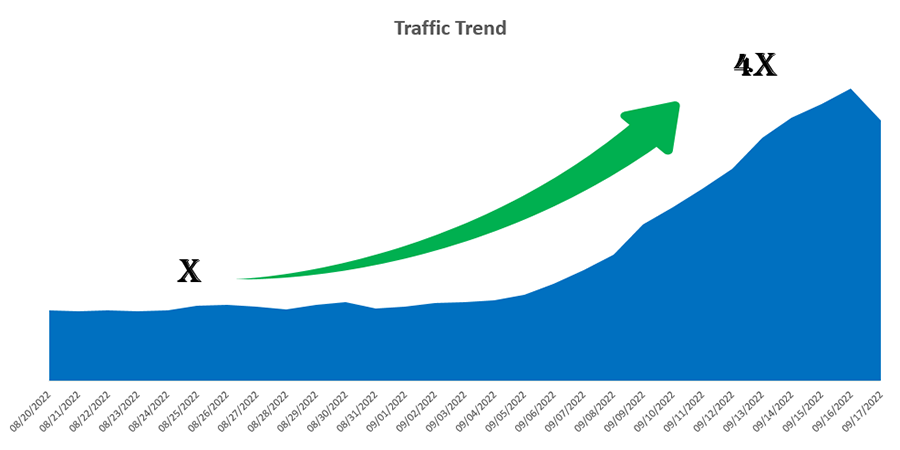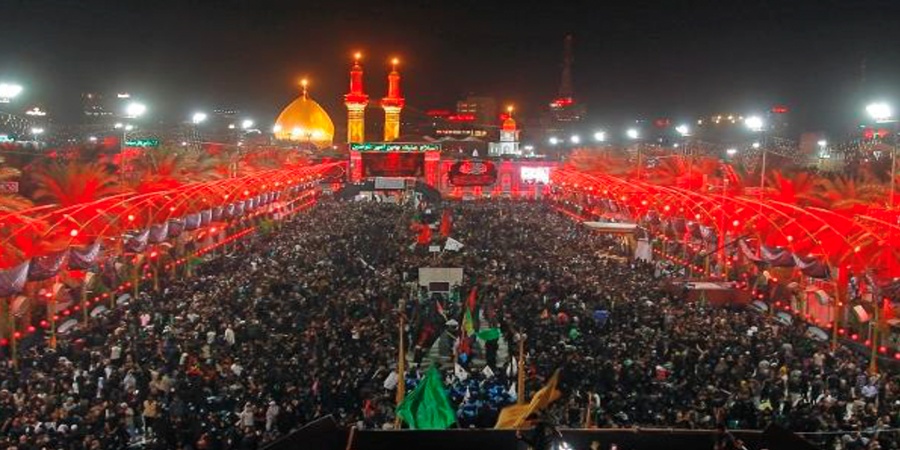The Arbaeen Zeyara Pilgrimage is one of the biggest annual religious pilgrimages in the world, primarily to the Holy City of Karbala in central Iraq. From the 28th of August, millions of pilgrims marched towards Karbala, passing through the cities of Diwaniah, Najaf, Hilla and Naseryah.
According to official statistics, this year 21.9 million pilgrims visited the holy cities of Karbala during the event, with participation peaking on September 16th — the highest number of visitors ever recorded for this event. As Iraq’s leading telecommunication services provider, Asiacell needed to ensure that its network had the required capacity and availability to accommodate the Arbaeen Pilgrimage with the best customer experience possible, especially in the shrine area of Karbala (~1 km2) and the roads leading up to it, where traffic on some throughways had increased by 600%. This was in addition to the dynamic mobility of subscribers between Hila and Karbala during the peak days of the event.
This exceptional increase in network traffic required careful planning and execution to ensure that the network ran optimally throughout the gathering.
Solution
Asiacell, together with Nokia — as the end-to-end (E2E) multivendor optimization vendor including RAN, IP, transport, and core — started a rigorous preparation three months ahead of the event, including network expansions and capacity dimensioning. However, with traffic increasing more than 300% compared to normal days and international roamers increasing by 1000%, operating on safe capacity margins was not possible due to physical site limitations of the shrine area “site acquisition.” Massive optimization work before and during the event was done to smoothly handle this exceptional traffic volume, pushing the equipment to its maximum utilization and performance. Before the event, 27 specific radio intelligent capacity features had been implemented. On the transport layer, on top of the capacity planning and E2E audits, a major exercise was conducted on network topology optimization and traffic localization to reduce transport layer risks and reduce latency.
A War Room was established to provide 24/7 support for any critical challenges and issues throughout the event and to shift traffic between technology layers (2G/3G/4G, IP and MW) to avoid congestion. During the event, more than 761 live optimization actions were implemented successfully without user performance degradation.
All of this support was in addition to the deployment of field teams of all expertise, who were testing and reporting field measurements to ensure and confirm optimal customer experience.

During Arbaeen Zeyara, data traffic increased by four times compared to normal days
Results and Benefits
Although the actual traffic exceeded the foreseen forecast by more than 15%, the event management was extremely successful, with peak active data sessions reaching more than 2 million active sessions during the peak hour and more than 1.2 million international roamers camping on Asiacell’s network. There was also a more than 194% data increase versus 2021 in Karbala only, mostly in the Shrine area.
The smart implementation of QCI’s and overall quality of service (QoS), based on predicted customers’ behavior and traffic trends, had a very positive impact on the overall customer experience, even during peak hours and max air interface utilization.
Thanks to very detailed planning on transport and core domains, multiple failover scenarios and traffic localization, the network availability was at 5 nines (99.999) resiliency, with significantly improved overall end-to-end latency.
The benchmarking showed Asiacell’s network’s superior performance versus other operators — from a customer experience and throughput perspective — with stable accessibility and retainability of more than a 99% success ratio achieved by Asiacell. And this was clearly a stupendous success in ensuring superior network performance, especially when the network witnessed one of the highest traffic densities worldwide in terms of Erlangs and Gigabytes per Km2.
Furthermore, zero major incidents were recorded during the gathering, despite forecasts being exceeded in the major cities.
Hisham Siblini, chief technology and IT officer of Asiacell, said: “It has always been part of our strategy to continuously improve our network performance and quality of service to our customers. For us, Nokia’s network optimization capabilities have been one of the key investments made to achieve this.”
Samar Mittal, VP, core networks and services business at Nokia MEA, said: “We are very pleased with the results achieved during this landmark event and looking forward to continue working with Asiacell to deliver best-in-class network performance and reduce operational cost, while driving the highest quality of service to its customers.”
